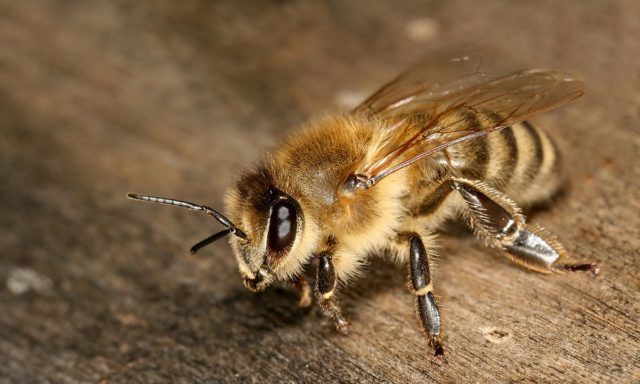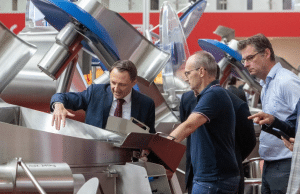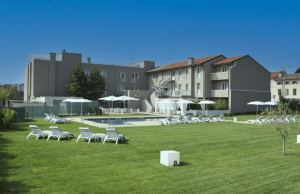As a contribution to increasing Ljubljana’s biodiversity, Cankarjev dom – CD Cultural and Congress Centre installed beehives on its rooftop following the example of the Paris Opera House already a decade ago. Approximately 500,000 buzzing Carniola bees are pollinating city plants and providing honey as a unique CD product. With urban beekeeping on its terrace, the CD is extremely proud of being a pioneer of this kind of Slovenian initiative
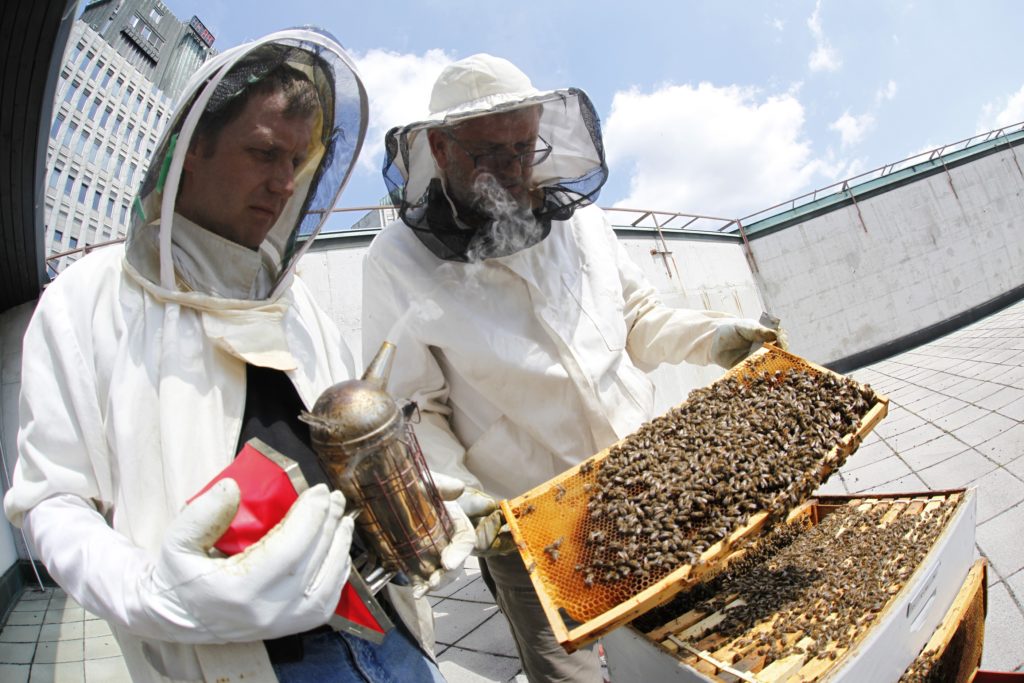
Every year since the first observation of the World Bee Day, this biggest Slovenian congress centre has been paying respect to the hardworking and diligent insects. This year, though, the organised and anticipated events marking the World Bee Day had to be cancelled due to Corona crisis. However, this does not mean that Cankarjev dom forgot about its bees. In fact, the in-house beekeeper explains in the video below how it all started and how important is to maintain the rooftop beehives that are included in the Ljubljana Bee Trail.
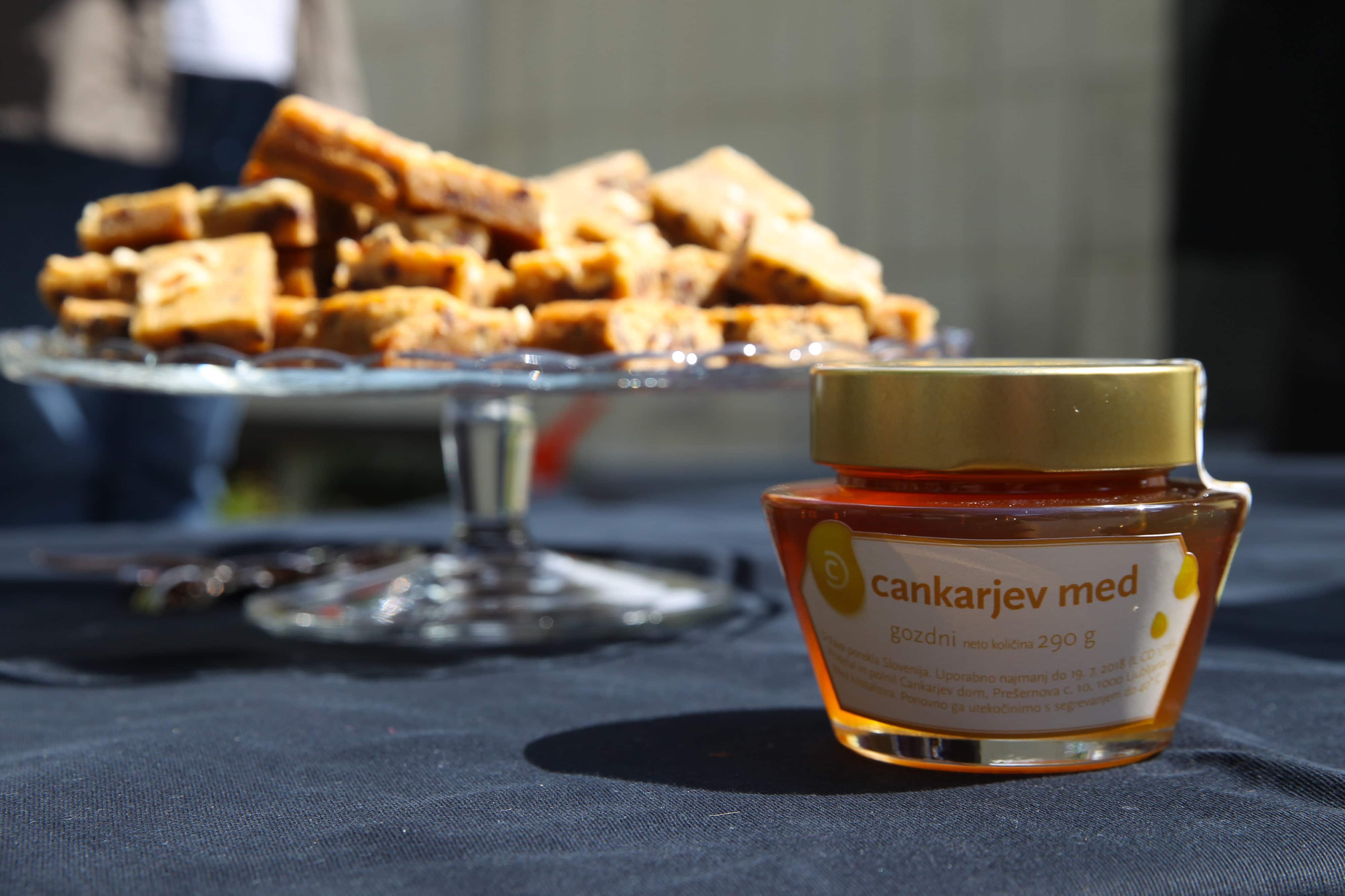
Under the video we provide the translation into English. Dive in and take a few minutes to watch this very informative and beautiful video about bees that feed also from the flowers from Cankarjev dom’s magnificent trees that enrich the building’s urban surroudings at its Council of Europe Park. Enjoy.
The beginnings of urban beekeeping in Cankarjev dom date back to April 2011, when we placed 4 beehives on the roof. As a beginner beekeeper, I searched for them online, and I read the news that the Paris Opera House kept urban beehives on its roof. I told myself that when I had enough knowledge and enough bee families, I will also place the hive on the roof of our house of culture. I passed this idea on to the CEO of the time, who was passionate about the matter. When we posted the news about urban beekeeping online, there were comments that this urban honey will be black with smog, full of lead and other impurities. Therefore, with the help of a Medex sponsor, we submitted this first honey for analysis to a reference laboratory in Bremen, which proved that our urban honey is free of heavy metal residues, heavy pesticides or other substances. By doing so, we have proven that urban honey is flawless and useful for human consumption. I was soon joined by Gorazd Trušnovec, who was a beginner apprentice to me for one year or two, and is now an independent beekeeper at other locations in Ljubljana. Together we also founded the Urban Beekeeper Association, where I received the Anton Janša 3rd degree award for my work. Also at the city level, they were aware of the importance of bees for the diversity of the urban environment, so they founded the Association of the Bee Trail, which unites beekeepers in the city center. Even in these difficult times associated with the Corona virus, it is necessary to take care of the smooth development of bee families, so I take care of them once a week and visit them with appropriate activities.
Not knowing how long this hobby would keep me going, I decided to beekeeping with the loading hives that don’t need an apiary. The hive is simply placed on a hive stand, and the hive itself consists of a bottom board, and the hive body that is placed on the board. Here we have a deep super with a brood box in which young bees are born. And on this, we place the queen excluder and on that the honey supers where the bees carry the honey to. On top of that comes the cover. This is what one loading hive looks like, for which we do not need a beehive. The advantage of loading hives is that the volume of the hive can be increased by loading new loads. This way we prevent bee swarming and we have the bee family.
For the education of children, we purchased a virtual hive, which presents the activities of the bee family. The bee family is basically a colony of bees in which there is one queen, at the peak of the season 50 thousand worker bees and a few thousand drones or male bees that fertilise young queen bees. The whole life of one family takes place in the brood box, where the queen lays eggs, somewhere two thousand eggs a day and then we have individual stages of laying, from eggs, larvae, after six days these larvae are covered and on the 21st day the worker bee hatches. From egg to new queen, the egg takes up to 16 days to hatch, and from egg to trout 24 days, this is the difference in laying, basically the queen moves from cell to cell and lays eggs.
We distinguish bees into summer bees that live somewhere between 3-4 weeks and winter bees that live from September to March, these are long-lived winter bees. In March, however, there is a change of generations, where winter bees begin to die and young bees begin to hatch. March is the most critical time for a bee family to survive.
When a bee hatches, it performs seven occupations in its life cycle. When the bee hatches, first they are cleaning bees. They clean the cells where the queen lays new eggs or forager bees lay honey. This is followed by a nurse bee, meaning they feed the larvae to grow and develop into bees. The next profession is wax making bees, which means that they make cells with wax glands. The next profession is a guard bee which keeps preys at the door, and only in their last 3 days of the life cycle do bees go out, we call them forager bees that collect honey and pollen.
We are now on the terrace of Cankarjev dom, where we in fear set up the first beehives ten years ago. Why with fear. As the pioneers of urban beekeeping in Slovenia, we didn’t know how bees would behave in the city center, whether they would have enough pasture to survive, and how they would coexist with humans. Already in the first season, it turned out that the bees are doing extremely well in the city, they have abundant pastures. The bee flies for collecting resources within a radius of three kilometers. Which means that in this circle we have the Castle Hill, the Rožnik Hill, the Šišenski Hill, and big city trees. So we distinguish two types of honey, flower honey, which is collected on the nectar of flowers, and forest honey, which is collected on the manna of deciduous and coniferous trees. There are a lot of deciduous trees in the city, we have large lindens, maples and other honey plants. In addition to honey, the main benefit of bees is the pollination of plant species that are important for human consumption, so that every third tablespoon of human food depends on bee pollination, and if bees became extinct, humanity would become extinct in five years. For this purpose, the Beekeepers’ Association of Slovenia achieved through the United Nations that we declared May 20 as World Bee Day. The basic purpose is to make humanity aware of the importance of the existence of bees for the production of human food and the existence of humanity. Also in Cankarjev dom we mark this important day with appropriate celebrations.


